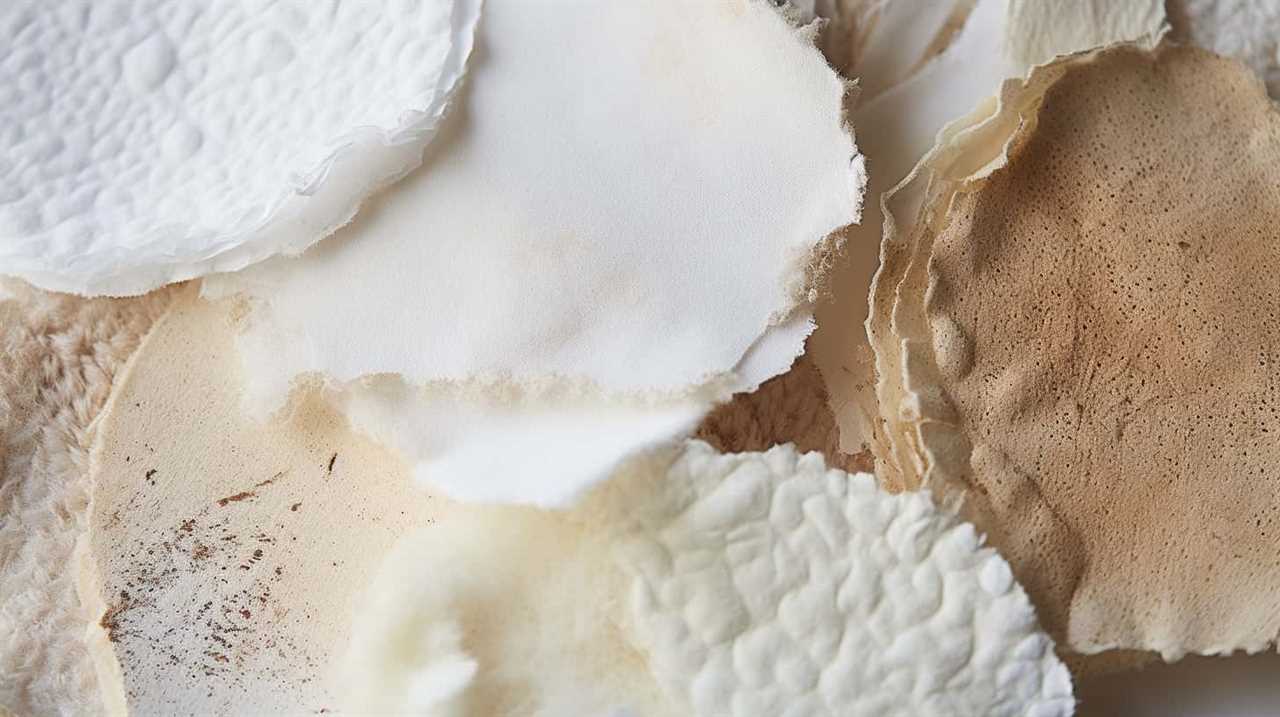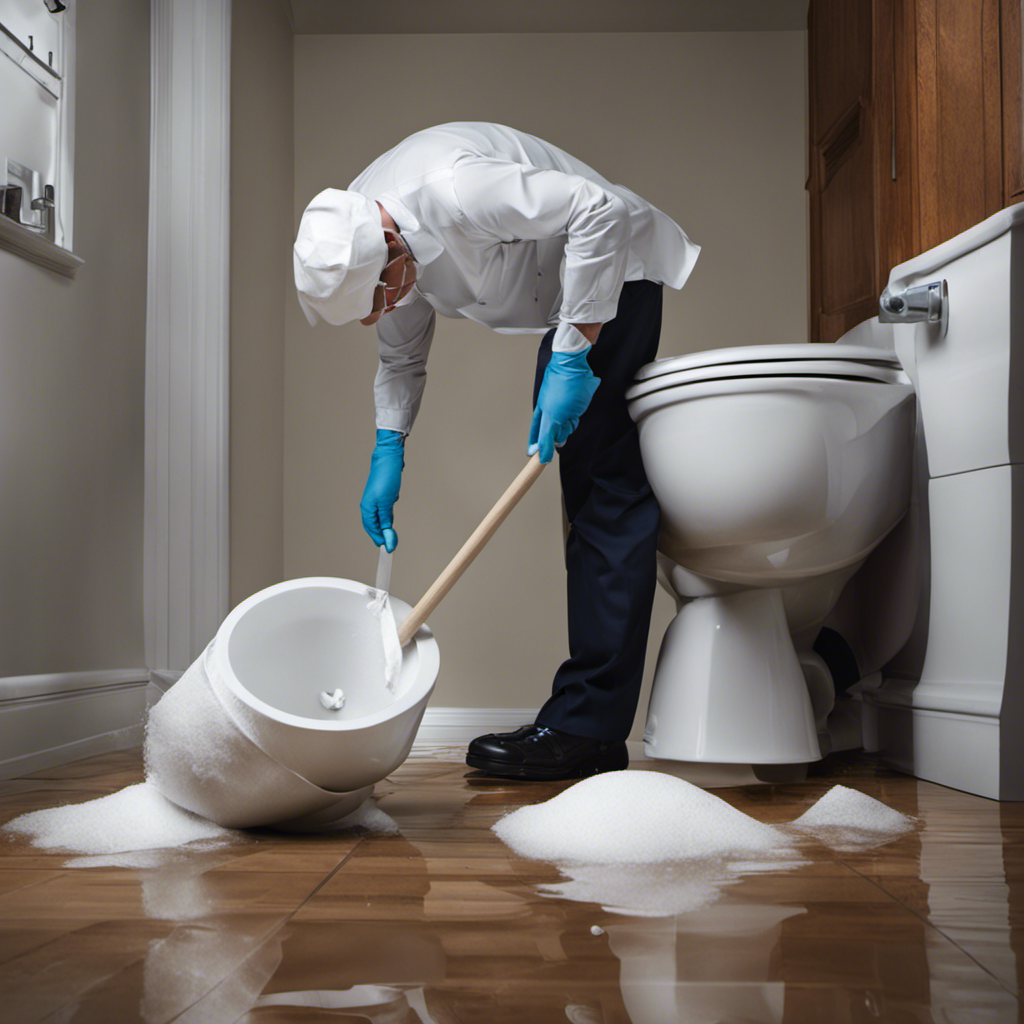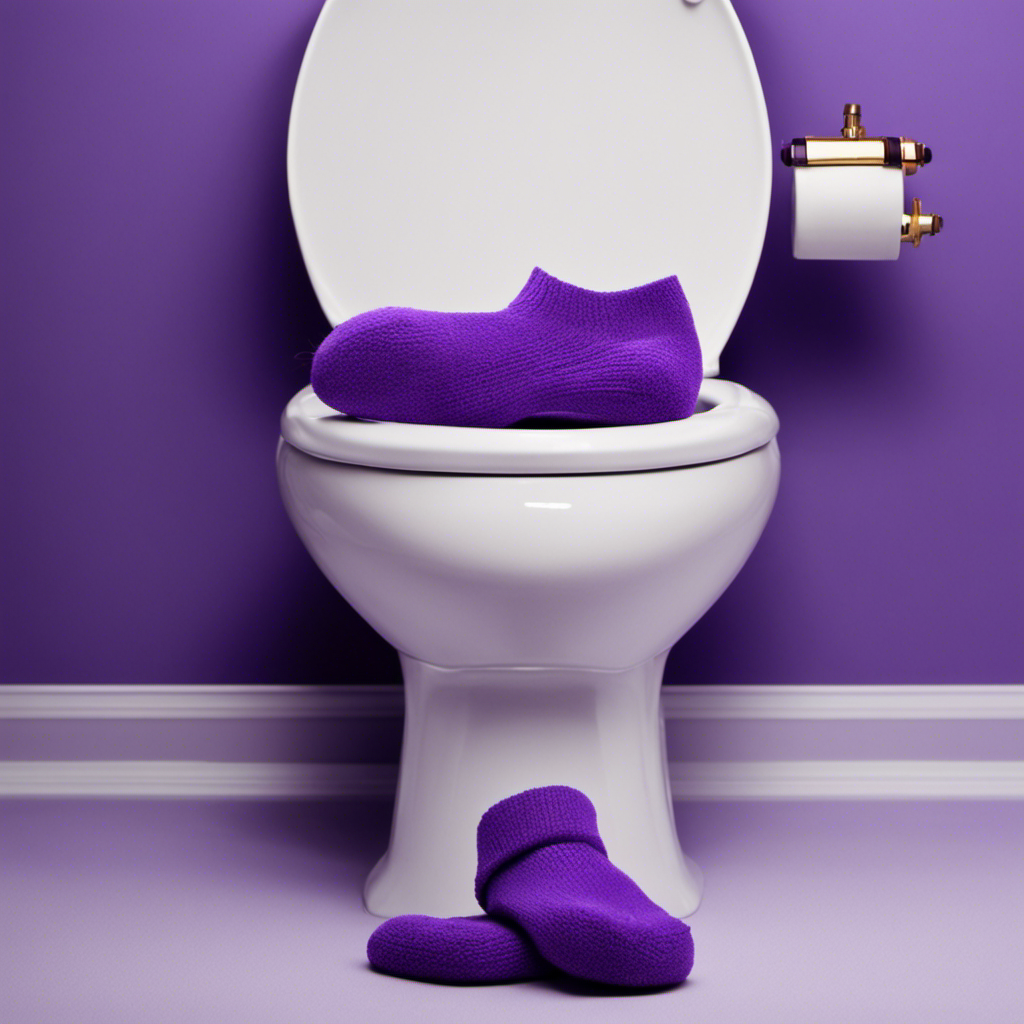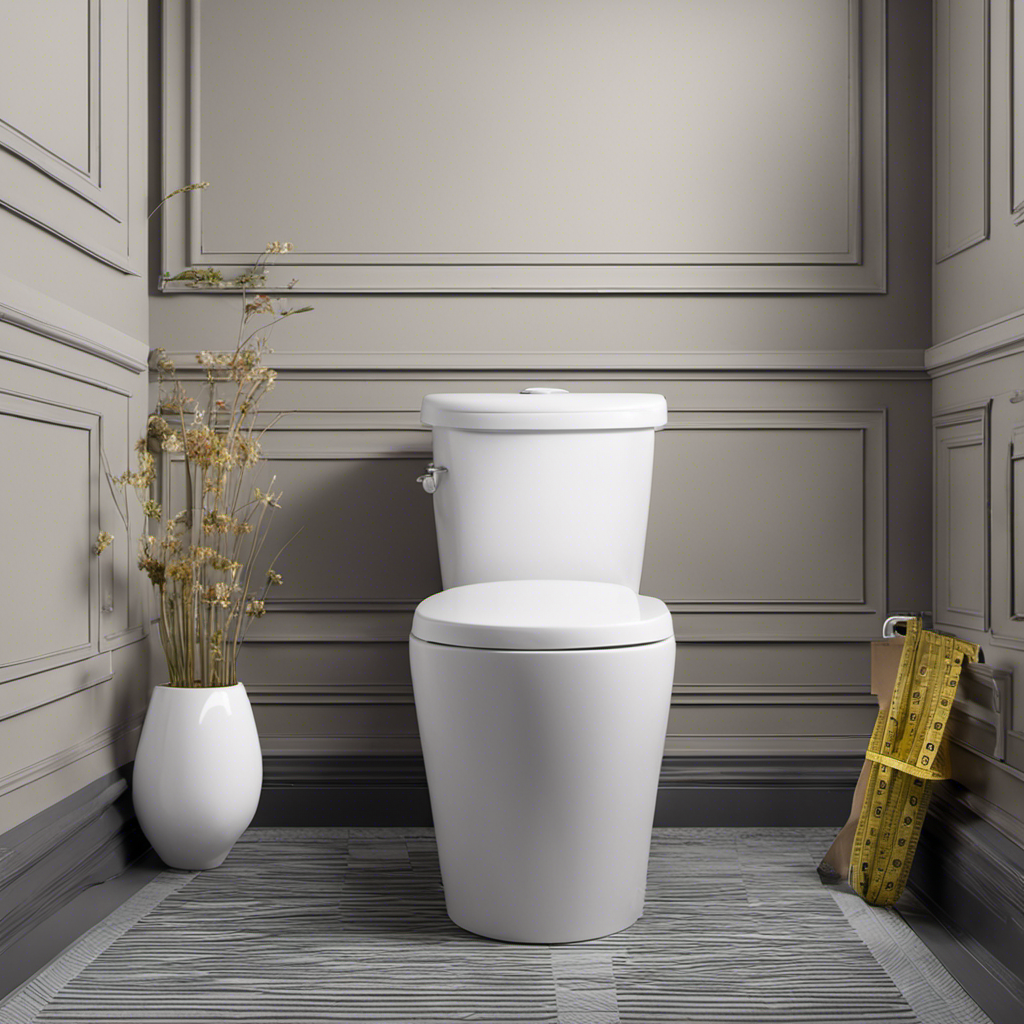Ever thought about the effects of chilly weather on your toilet? Get ready, as we’re about to explore the intriguing realm of weather-related toilet problems. As the mercury falls, issues like frozen pipes, shattered tanks, and blocked drains can cause serious trouble for your ceramic sanctuary.
Not to mention sluggish flushing, condensation buildup, and potential water supply interruptions. In this article, we’ll explore the ways in which cold weather can affect your toilet, providing you with the knowledge you need to master the art of toilet maintenance.
Key Takeaways
- Cold weather can lead to frozen pipes and cracked toilet tanks, compromising the functionality of the toilet and causing water leakage.
- Proper insulation of pipes and regular maintenance of the toilet can prevent clogs and blockages.
- Sluggish flushing and toilet tank sweating can occur in cold weather due to colder water and inadequate insulation.
- Freezing temperatures can cause water supply interruptions, leading to water shortage and potential burst pipes, which can result in water damage and expensive repairs.
Frozen Pipes
Frozen pipes can cause significant problems for homeowners during cold weather. When water inside the pipes freezes, it expands and puts pressure on the pipes, leading to cracks or bursts. To prevent frozen pipes, it’s crucial to insulate them properly. This can be done by installing insulation sleeves or wrapping the pipes with heat tape.
Additionally, keeping the heat on in your home, even when you’re away, can help maintain a consistent temperature and prevent freezing. If you do find yourself with frozen pipes, it’s important to thaw them carefully to avoid further damage. This can be done by using a hairdryer, heating pad, or hot towels. Remember to start from the end closest to the faucet and work your way back.
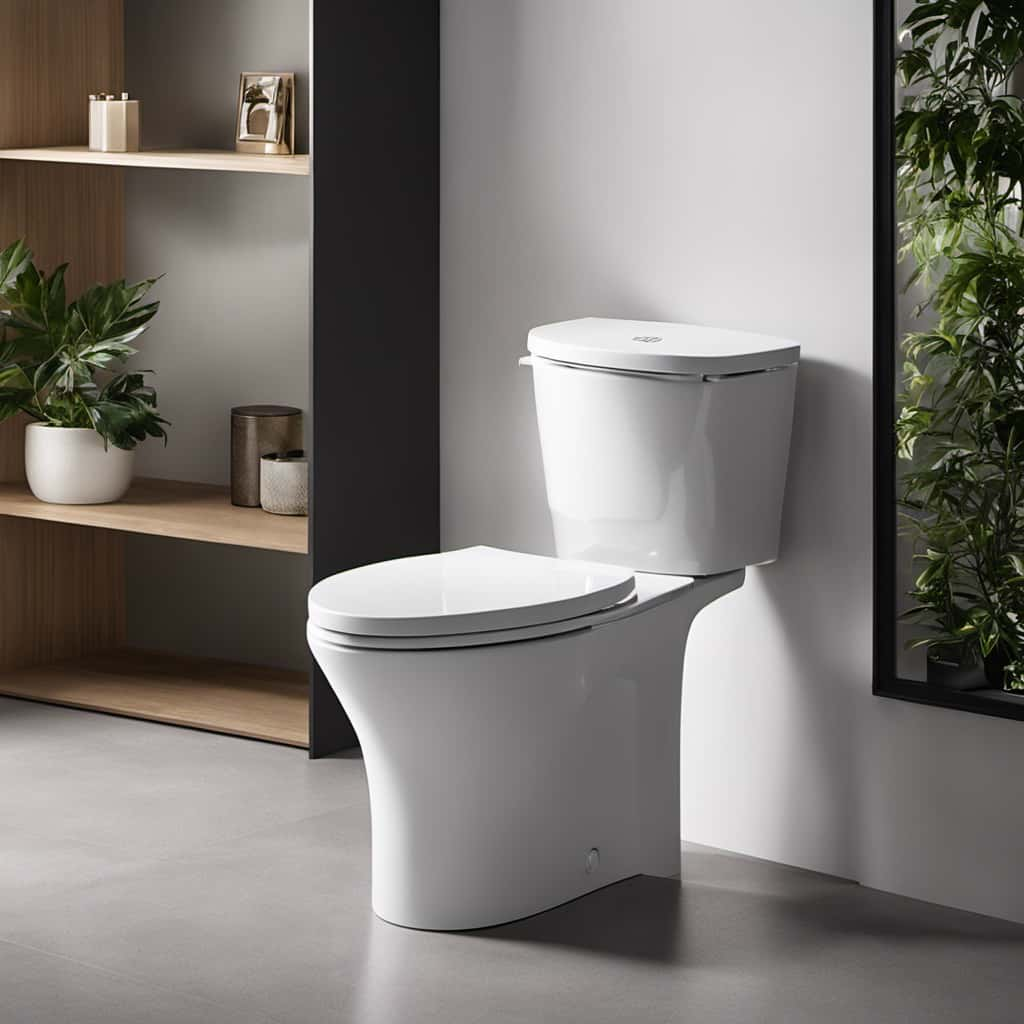
Now, let’s move on to the next topic of discussion: the cracked tank.
Cracked Tank
We have found that a sudden drop in temperature can potentially cause a toilet tank to crack. This is an important aspect of toilet maintenance that homeowners should be aware of.
When the temperature drops rapidly, the water inside the tank can freeze and expand, putting pressure on the walls of the tank. Over time, this repeated expansion and contraction can weaken the tank, leading to cracks.
Cracked tanks not only compromise the functionality of the toilet but can also result in water leakage and damage to the surrounding area. If you notice any signs of a cracked tank, such as water pooling around the base of the toilet or a visible crack, it’s crucial to address the issue promptly.
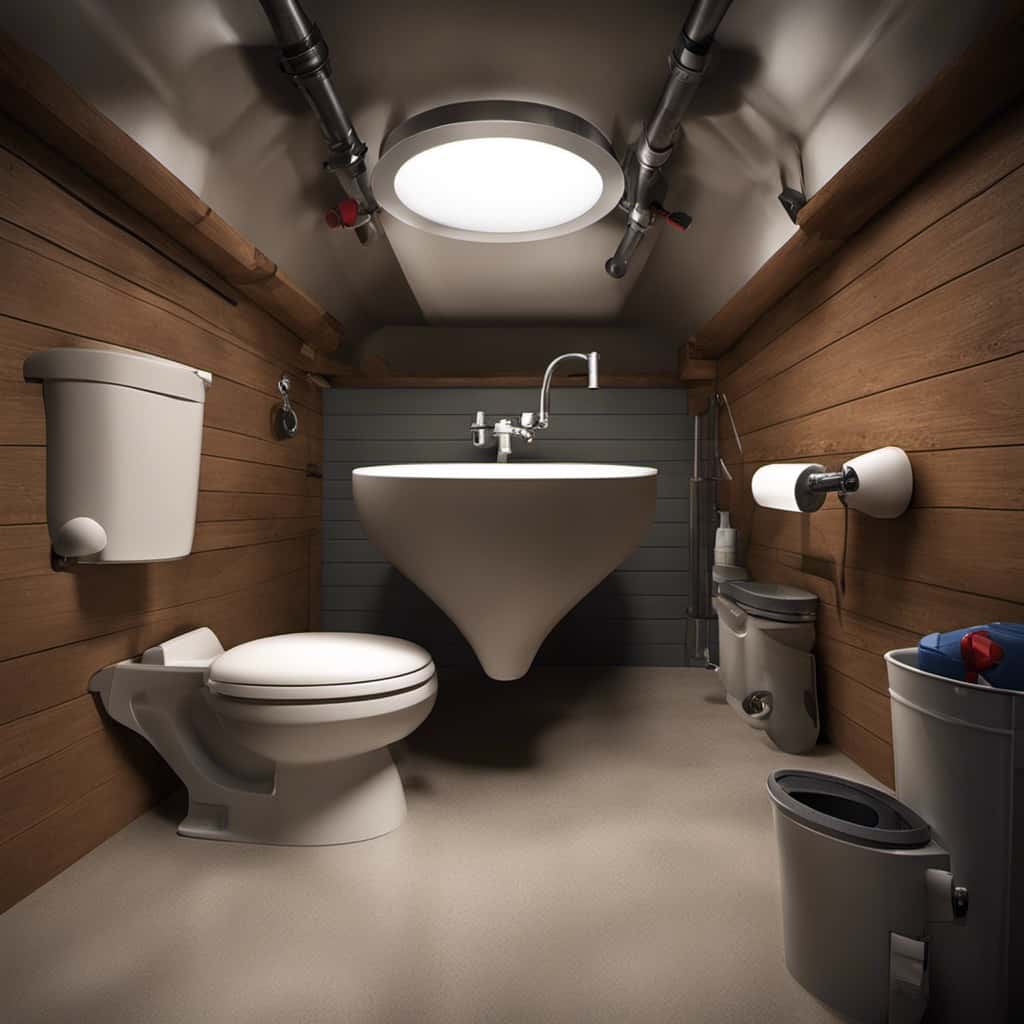
Hiring a professional plumber experienced in toilet repairs can help resolve the problem and prevent further damage. Regular maintenance and inspections can also help identify potential cracks early on and prevent more serious issues.
Clogged Drain
When temperatures drop, the risk of freezing pipes and clogs in a toilet’s drain increases.
Freezing water within the pipes can cause blockages, leading to a clogged drain.
To prevent this, it’s important to insulate the pipes and ensure proper drainage by regularly cleaning and maintaining the toilet.
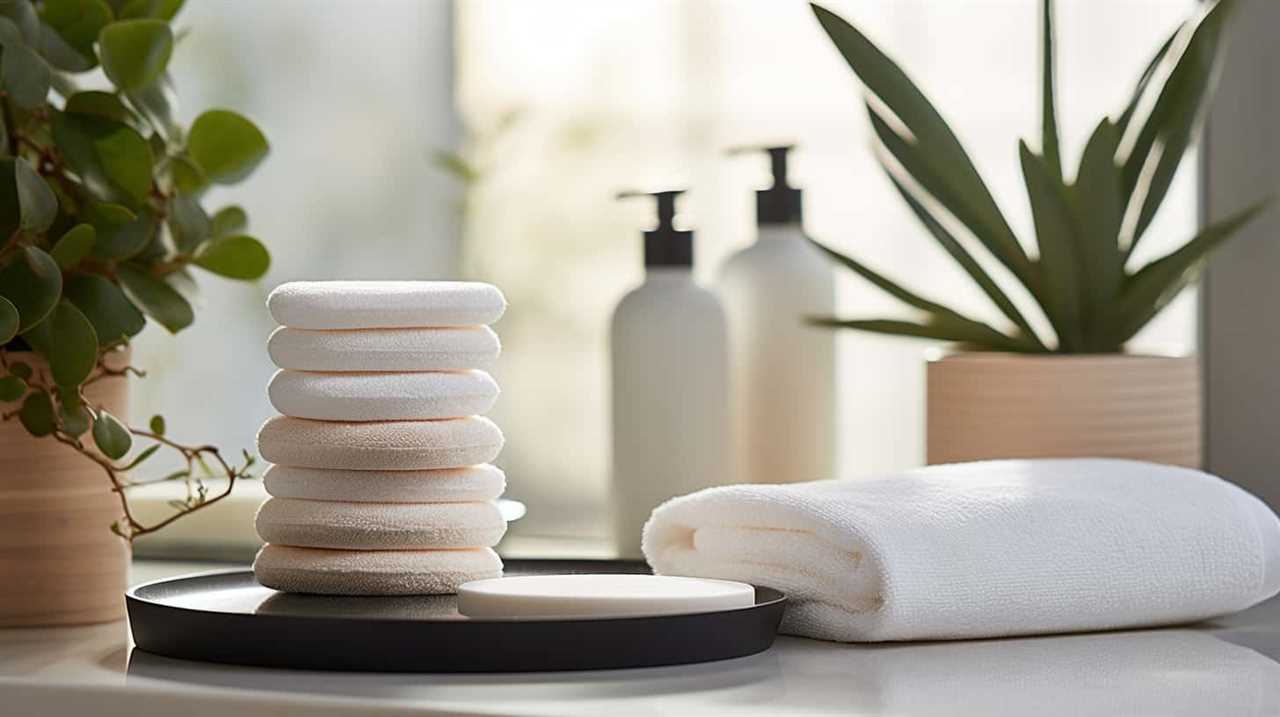
Freezing Pipes and Clogs
During cold weather, our toilets can be affected by freezing pipes and clogs. To prevent freezing, it’s crucial to employ effective insulation methods. Here are some points to consider:
- Insulate pipes: Wrap pipes with insulation sleeves or use heat tape to provide a barrier against freezing temperatures.
- Keep the thermostat steady: Maintain a consistent temperature in your home to prevent pipes from freezing.
- Open cabinet doors: Allow warm air to circulate around pipes by keeping cabinet doors open under sinks.
- Drip faucets: Running a small amount of water through faucets can help prevent freezing by keeping the water moving.
- Disconnect outdoor hoses: Remove garden hoses and drain any remaining water to prevent freezing and subsequent pipe damage.
By taking these preventive measures, you can reduce the risk of freezing pipes and clogs.
Now, let’s explore some preventive measures for clogs.
Preventive Measures for Clogs
To prevent clogs in our toilets, it is important to regularly clean and maintain the drainage system. Proper toilet maintenance can help prevent plumbing problems and ensure smooth functioning. Here are some preventive measures that can help avoid clogged drains:
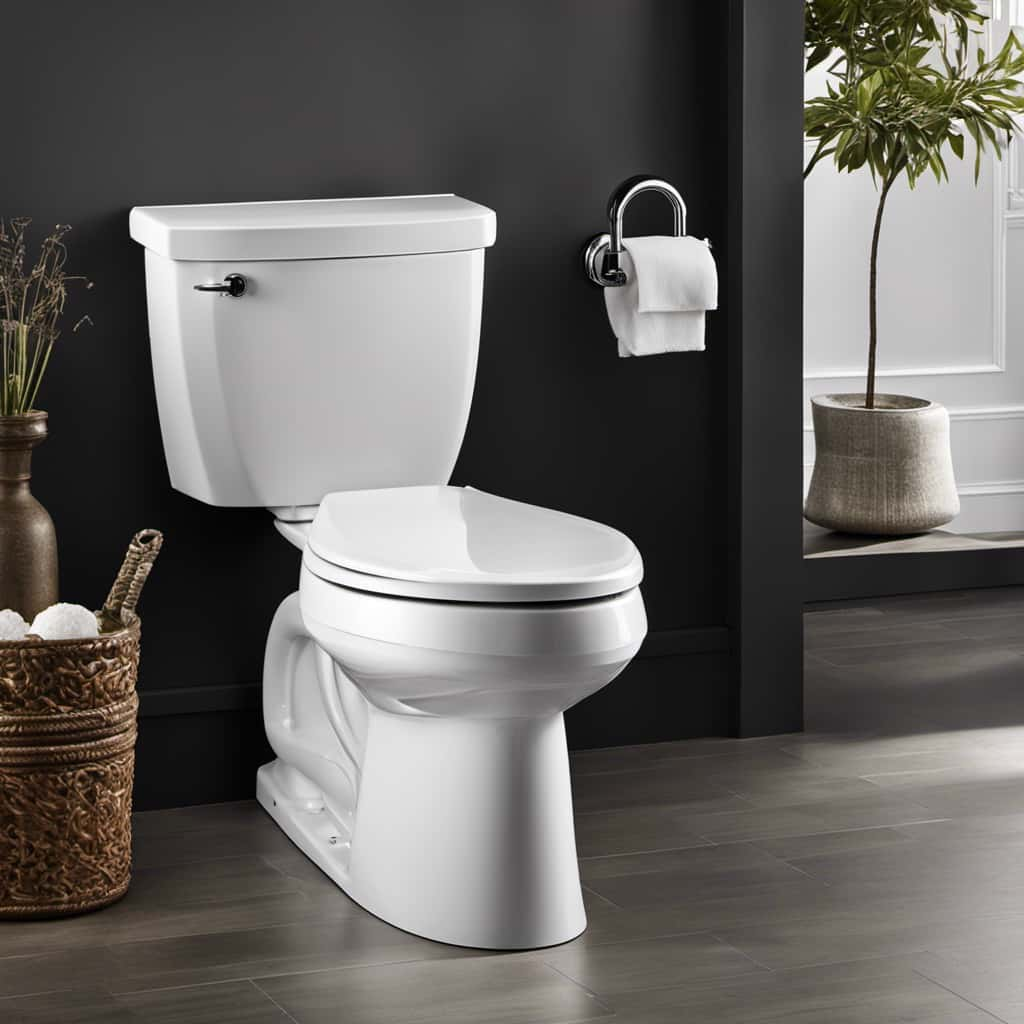
| Preventive Measures | Description |
|---|---|
| Use a plunger | A plunger can be used to unclog minor blockages. |
| Avoid flushing debris | To prevent clogs, avoid flushing items like wipes or paper towels. |
| Regular cleaning | Regularly clean the toilet and flush with hot water to remove any buildup. |
| Install a drain guard | A drain guard can catch hair and other debris, preventing it from entering the drainage system. |
Sluggish Flushing
In colder temperatures, we may experience a decrease in the efficiency of our toilet’s flushing mechanism. This can lead to sluggish flushing and slow drainage, causing frustration and inconvenience. Here are five important factors to consider regarding sluggish flushing in cold weather:
- Decreased water temperature: Cold water takes longer to dissolve waste and can affect the flushing power.
- Reduced water pressure: Cold weather can cause a drop in water pressure, resulting in weaker flushes.
- Frozen pipes: Freezing temperatures can cause pipes to freeze, blocking the flow of water and affecting flushing performance.
- Toilet tank insulation: Inadequate insulation in the toilet tank can cause the water to cool quickly and affect flush efficiency.
- Clogging: Cold weather can contribute to clogs due to the increased use of toilet paper and other waste.
Understanding these factors and implementing proper toilet maintenance can help alleviate the issues of sluggish flushing and slow drainage.
Now, let’s discuss the next subtopic: condensation buildup.
Condensation Buildup
As we delve into the topic of condensation buildup in relation to how cold weather affects a toilet, it’s important to understand the potential issues that can arise.
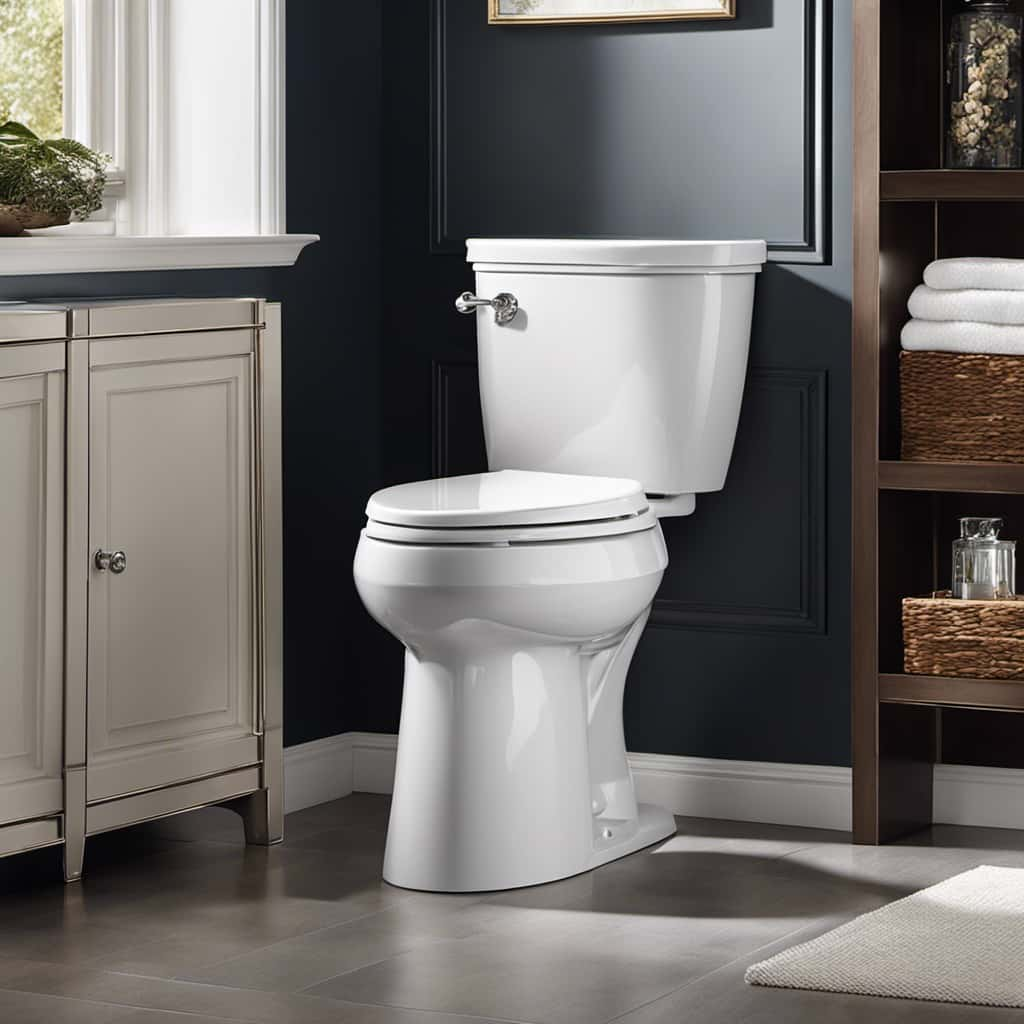
One common issue that homeowners may encounter is toilet tank sweating. This occurs when the cold temperature of the water inside the tank causes moisture to condense on the surface, leading to droplets of water forming on the exterior of the tank. This can be problematic as it can cause water damage to the surrounding area and potentially lead to mold growth.
To prevent toilet tank sweating, it’s recommended to insulate the tank with a foam or blanket specifically designed for toilet insulation. This will help to regulate the temperature inside the tank and reduce condensation buildup.
Now, let’s move on to discussing the next potential issue: water supply interruptions.
Water Supply Interruptions
Water supply interruptions can be a common issue during cold weather. Freezing temperatures can cause pipes to freeze and potentially burst, leading to a disruption in the water supply.
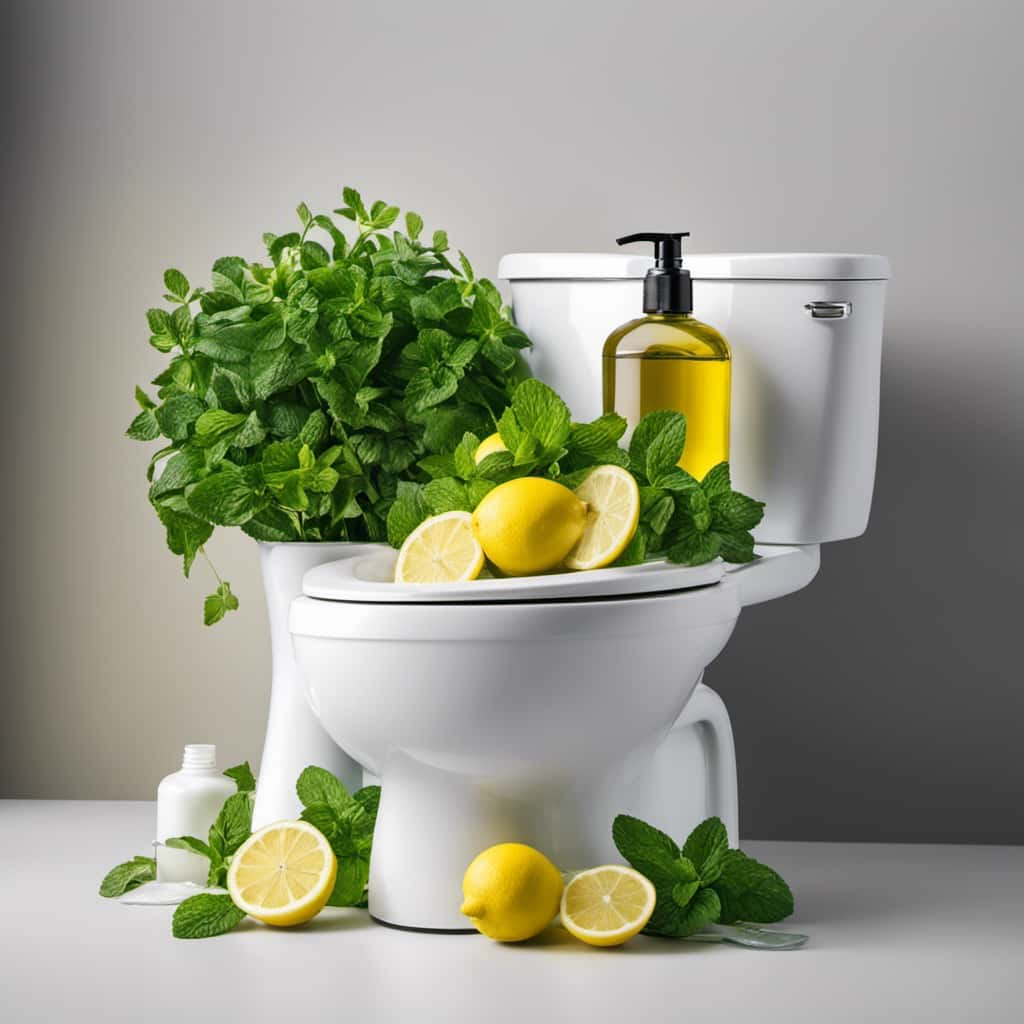
Additionally, severe cold can also contribute to water shortage as the demand for water increases for heating purposes.
These interruptions can have a significant impact on plumbing systems, causing damage and inconvenience.
Freezing Pipes, Water Shortage
During cold weather, we may experience a shortage of water and potential freezing of pipes. This can lead to various issues and inconveniences, such as:
- Burst pipes: When water freezes in the pipes, it expands and can cause them to burst. This can result in significant water damage and expensive repairs.
- Water supply interruptions: Freezing pipes can lead to a lack of water supply, leaving us without access to clean water for drinking, cooking, and other essential needs.
- Disrupted daily routines: Without a steady water supply, simple tasks like showering, washing dishes, and doing laundry become challenging and time-consuming.
- Increased stress and frustration: Dealing with water shortages and burst pipes can be incredibly stressful, causing frustration and anxiety.
- Financial burden: Repairing burst pipes and dealing with water damage can be costly, adding unnecessary financial strain.
These challenges highlight the importance of taking preventive measures to protect our plumbing systems during cold weather.
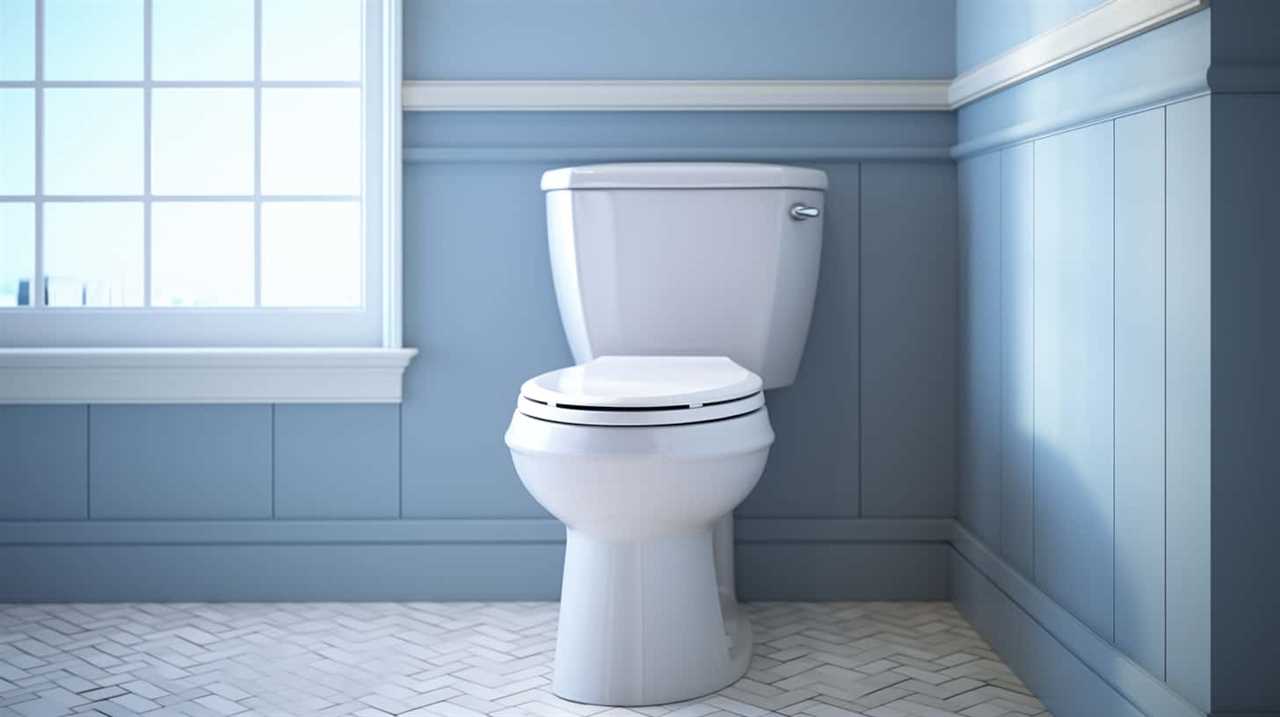
Impact on Plumbing Systems
In cold weather, our toilet can be affected due to a lack of water supply caused by freezing pipes. The impact on plumbing systems during freezing temperatures can lead to a decrease in water pressure, which can directly affect the functionality of toilets.
When pipes freeze, the water inside expands, causing the pipes to crack or burst. This can result in a disruption of water flow to the toilet, leading to a reduced water supply or even a complete interruption.
Additionally, the effects of cold weather on plumbing systems can also extend to septic systems. Freezing temperatures can cause septic tanks and drain fields to freeze, leading to blockages and potential damage.
It’s crucial to take preventative measures, such as insulating pipes and septic systems, to minimize the impact of cold weather on our plumbing infrastructure.
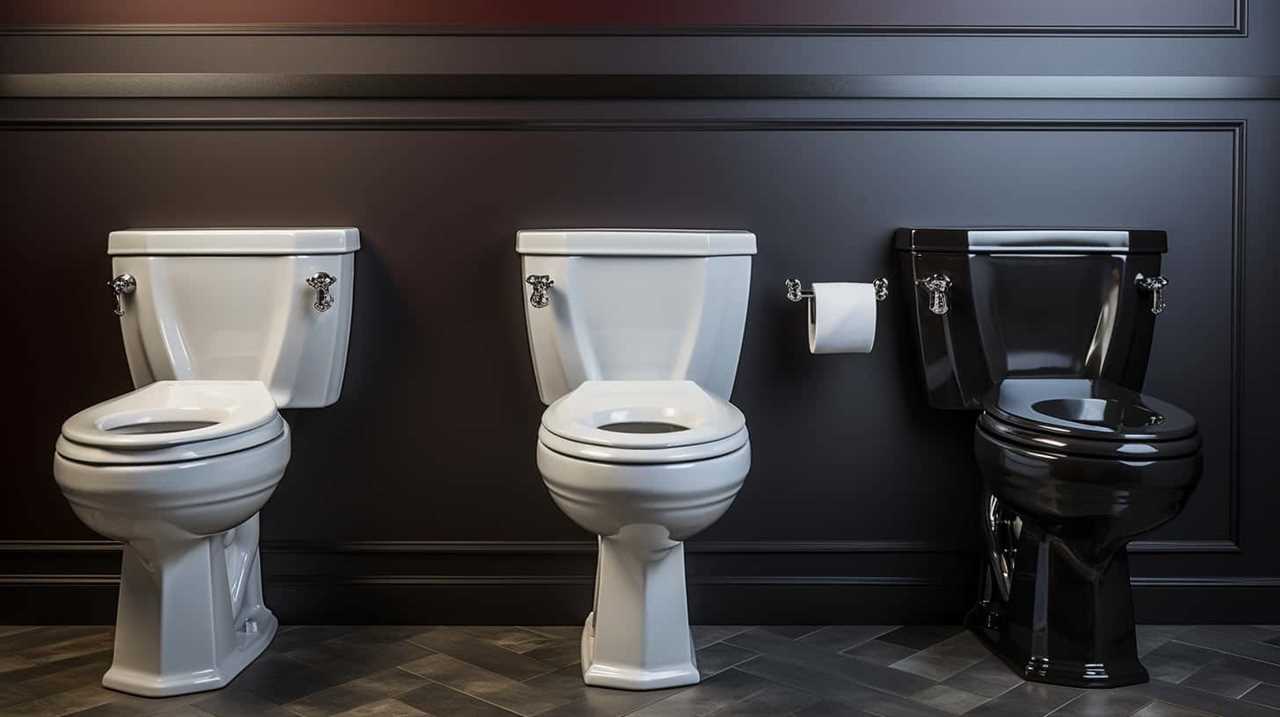
Frequently Asked Questions
Can Cold Weather Cause a Toilet to Crack or Break?
Yes, cold weather can affect a toilet. It can cause the wax seal to contract, leading to leaks. Additionally, the cold temperatures can affect the toilet tank’s ability to fill properly, resulting in reduced flushing performance.
How Does Cold Weather Affect the Flushing Mechanism of a Toilet?
Cold weather can cause freezing in a toilet, leading to various flushing issues. The freezing can affect the flushing mechanism, causing it to malfunction or become sluggish, requiring repairs or thawing to resolve the problem.
Can Cold Weather Cause Condensation to Build up on the Exterior of a Toilet?
In cold weather, toilets can experience condensation on their exteriors. This can be prevented by ensuring proper toilet insulation and implementing winter maintenance tips and tricks to prevent freezing.
Does Cold Weather Impact the Water Supply to a Toilet, Leading to Interruptions?
Yes, cold weather can affect the water supply to a toilet by freezing the pipes, causing interruptions. Insulating the toilet tank can prevent these interruptions and ensure a continuous water supply.

Can Cold Weather Cause a Toilet Drain to Become Clogged or Blocked?
Yes, cold weather can potentially cause a toilet drain to become clogged or blocked. Frozen pipes may occur, blocking water flow, and the seals around the toilet can be affected, leading to leaks or odors.
Conclusion
In conclusion, cold weather can wreak havoc on a toilet. From frozen pipes that can burst and cause extensive damage, to cracked tanks that leak and require costly repairs, the effects are far from minor.
Clogged drains, sluggish flushing, and condensation buildup are additional inconveniences that can arise. Not to mention the potential interruptions in water supply.
It’s crucial to take preventative measures and ensure proper insulation to avoid these troubles during the frigid winter months.
